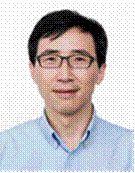主讲人:Hong Jin Fan教授
时间: 2018年11月9日上午9:00
地点: 深圳大学西丽校区420会议室

报告人简介:
Dr. Fan is currently an associateprofessor at Nanyang Technological University (NTU). He received PhD fromNational University of Singapore in 2003, followed by postdoc atMax-Planck-Institute of Microstructure Physics, Germany and University ofCambridge. He joined in NTU as faculty since 2008. Dr. Fan’s research has beenfocused on nanomaterials in energy conversion and storage (including batteries,supercapacitors and electrocatalysts). He is also interested in light emissionsfrom low-dimensional semiconductors.
He has authored and co-authored about 200journal papers, with total citations of more than 17000 and H-index of 71. Heis recognized as Highly Cited Researchers in 2016 - 2018. He is aneditorial/advisory board member of 4 Wiley journals and 3 IOP journals, and 3Elsevier journals.
讲座摘要:
Water electrolysis, fuel cells, andmetal-air batteries all require efficient and cheap electrocatalysts that cansignificantly lower the overpotentials. Bimetallic alloys and their oxides ornitrides compounds are particularly interesting as non-precious metalelectrocatalyst materials for HER and OER applications, because of theirtailorable electronic structure, conductivity, and surface chemistry. Our grouphas been actively working on nanoarray materials directly grown on conductivesubstrates as electrodes for supercapacitor, batteries and electrocatalyst.
In this talk, I will present two mainresults about surface and interface engineering/functionalization ofelectrocatalysts: (1) RF nitrogen and carbon plasma as a highly effectivetechnique for conversion reaction and surface functionalization ofnanostructured electrocatalysts. The N plasma treatment not only generateshierarchical nanostructure surface, but also induces N doping as well ashydrophilicity. Using C-plasma, we can not only reduce the metal oxide surface,but also deposit a thin and uniform carbon coating. In addition, in thepresence of metal catalyst, it can also generate vertical graphene nanosheetsdirectly on electrode materials. (2) We demonstrate that dual cation doping, orcation-anion co-doping in nanoarray electrode materials can simultaneouslymodulate increase active sites exposure, and regulate water dissociation and hydrogenadsorption free energy). As a consequence, the dopings lead to a significantenhancement in catalytic activities for both HER and OER.
欢迎有兴趣的师生参加!
